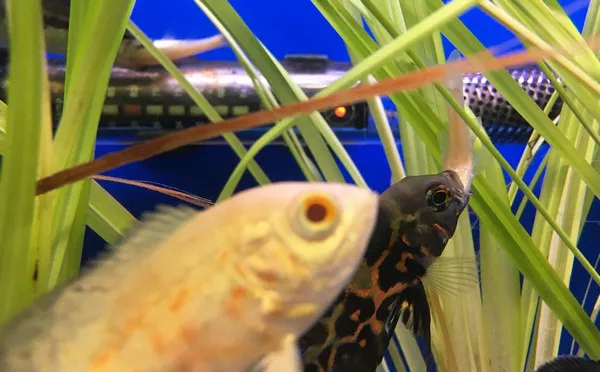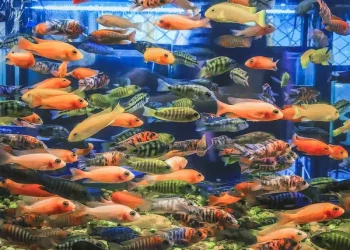Lungfish are a fascinating group of fish that have been around for over 400 million years. There are six different species of lungfish that are currently known, and they can be found in freshwater environments in Africa, South America, and Australia. One of the most interesting features of lungfish is the way they breathe, as they are able to extract oxygen from both air and water. In this article, we will explore how lungfish breathe and the adaptations they have evolved to survive in their unique aquatic habitats.
The anatomy of lungfish
Lungfish are so named because they possess a primitive lung that is used to extract oxygen from the air. This lung is not as efficient as the lungs of land animals, but it allows the fish to survive in oxygen-poor environments. The lung is made up of a series of tubes that are surrounded by blood vessels, and it is located in the chest cavity of the fish.
In addition to their lungs, lungfish also have gills that are used to extract oxygen from water. The gills are located on either side of the fish’s head and are covered by a bony plate called an operculum. The operculum helps to pump water over the gills, allowing the fish to extract oxygen from the water.
How lungfish breathe
Lungfish are able to breathe both air and water, which gives them an advantage over other fish in environments where oxygen levels are low. When lungfish are in water, they use their gills to extract oxygen from the water. As water passes over the gills, oxygen is absorbed into the bloodstream and carbon dioxide is released.
When lungfish are out of water, they use their primitive lung to extract oxygen from the air. The lung is connected to the fish’s throat, and when the fish takes a breath, air is drawn into the lung. As the air passes through the lung, oxygen is absorbed into the bloodstream and carbon dioxide is released.
Adaptations of lungfish
Lungfish have evolved a number of adaptations that allow them to survive in their unique aquatic environments. One of these adaptations is the ability to aestivate, which is a form of hibernation that allows the fish to survive in dried-up pools during the dry season. During aestivation, the fish buries itself in the mud and secretes a mucus cocoon around its body. The lungfish is able to survive in this state for up to four years by extracting oxygen from the air stored in the cocoon.
Another adaptation of lungfish is the ability to survive in stagnant water. When the water in a pond or lake becomes stagnant, the oxygen levels drop, and most fish are unable to survive. However, lungfish are able to survive by using their primitive lung to extract oxygen from the air above the water.
In conclusion, lungfish are a unique group of fish that have evolved the ability to breathe both air and water. They are able to survive in a variety of aquatic environments by using their lungs and gills to extract oxygen from the air and water. The adaptations of lungfish have allowed them to survive for over 400 million years, making them one of the oldest groups of vertebrates on the planet.

























